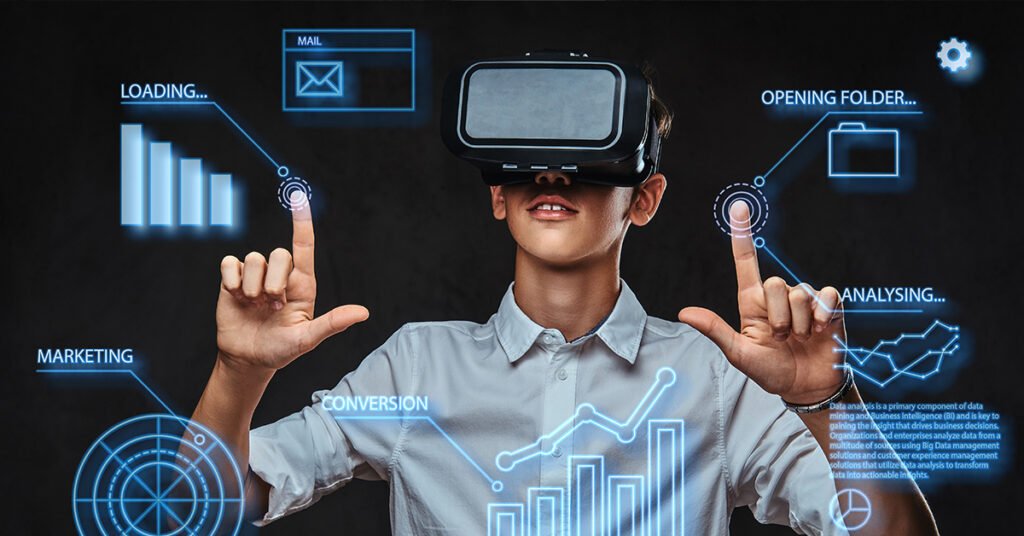Innovations in AI are changing the way businesses function. As companies started adopting AI, the workplace and technology have transformed like never before.
Because computers evolved in just a few decades at such a rapid pace and have become so prevalent in our daily lives, it can be easy to overlook just how recent this technology is. As this history notes, some (but by no means all) computer scientists from its earliest days have aspired to make machines as intelligent as humans. When the term ‘Artificial Intelligence’ was first used at the Dartmouth Conference of 1956, surely no one would have believed that the use of a newly created theoretical aspect of research would exactly reshape the entire economy of humanity with their natural language processing, solving, neural networks early versions, computational power, Internet of Things, and voice-activated assistants.
The healthcare sector has pushed towards a significant transformation by artificial intelligence. AI, for example, can analyze certain varieties of medical images with incredible precision, identifying problems like cancer, cardiac illness, and neurodegenerative diseases earlier than previous methods did. And, through AI, doctors are designing personalized treatment zones tailored to individual genomics, lifestyles, and medical histories. Patients benefit from more effective care. Furthermore, AI chatbots and virtual assistants are available 24/7 to provide medical guidance, respond to queries, and assist with scheduling appointments, potentially making life easier for healthcare workers. Finally, on the new drug discovery and development side, AI is making it faster and cheaper by analyzing vast amounts of data to determine how different treatments might work against diseases.

The financial world is swiftly adopting AI to make it safer, more streamlined, and a better customer experience. Using AI systems, transactions can be detected in real-time, identifying unusual activities that can prevent financial crimes beforehand. Many financial firms employ AI to make rapid-fire trading decisions to make a quick buck and reduce risk. AI-powered virtual assistants in banking offer personalized support, respond to day-to-day inquiries, and help with transactions. AI allows lenders to make a more fair lending decision by analyzing multiple data points apart from credit score to assess credit and risk.
AI is transforming how we shop by building experiences that feel more personalized, seamless, and automated. It targets items that fit our taste by making a log of shoppers’ actions to suggest products users will love. This increases sales and keeps the customers satisfied. In addition, smart chatbots can guide shoppers through online stores, answer questions, and help with buying then and there. AI is changing the retail scene by helping stores forecast their sales, manage inventory better, and reduce supply chain issues. Thanks to AI, customers can simply walk into a store, pick up what they need, and head out without waiting in line to pay. This makes the whole shopping experience faster and more convenient.
In manufacturing, the focus has shifted to AI to boost production and improve the quality of products. AI is constantly monitoring equipment to predict problems before they occur, which helps save on maintenance costs and reduces downtime. AI-powered visual inspection systems are better at detecting product defects than human inspectors. Additionally, robots with AI can handle repetitive tasks efficiently, improving productivity and minimizing human error. By using AI, manufacturers can better anticipate changes in demand, manage their inventory, and reduce disruptions in the supply chain.
Artificial intelligence (AI) continues to evolve rapidly, introducing innovations that are transforming various industries:
AI holds immense future potential promising to bring about change in various aspects. Here’s a deeper look:
Artificial intelligence is rapidly reshaping industries in both a disruptive and constructive manner. AI is used by businesses across sectors such as healthcare, banking, retail, and manufacturing to boost efficiency, enhance decision-making, and improve consumer experience. Though there are still fears surrounding job displacement and ethical implications, the future of AI does look very bright indeed. Those who learn how to adapt, and take full advantage of the technology breakthroughs, would be better poised to succeed in the rapidly shifting arenas of AI-driven innovation.